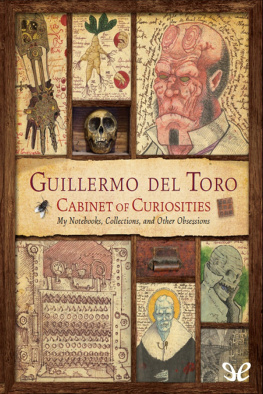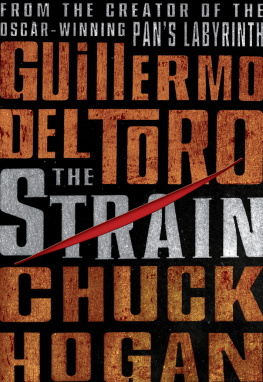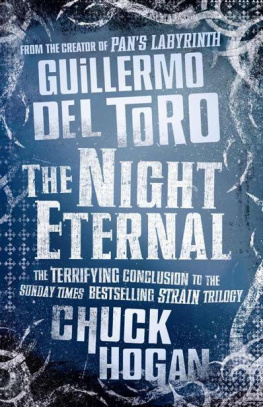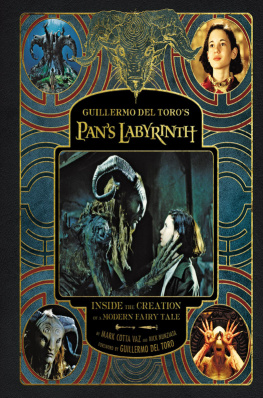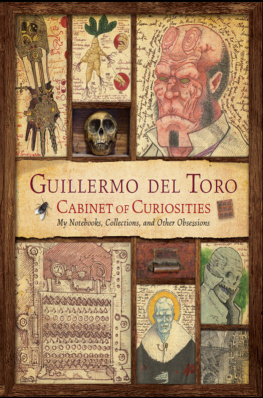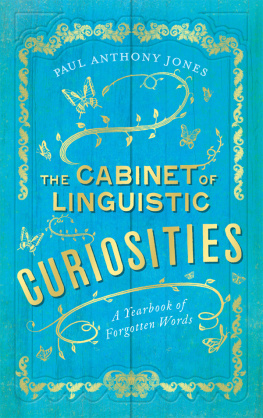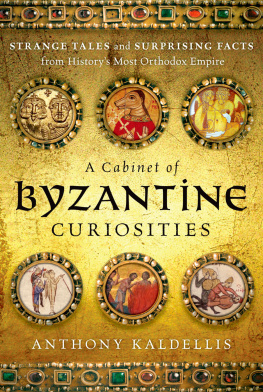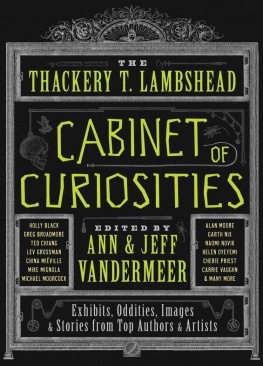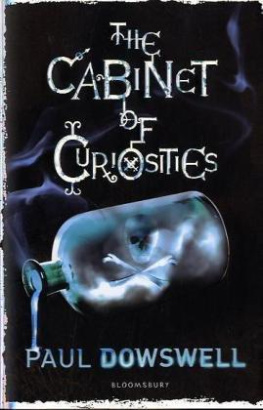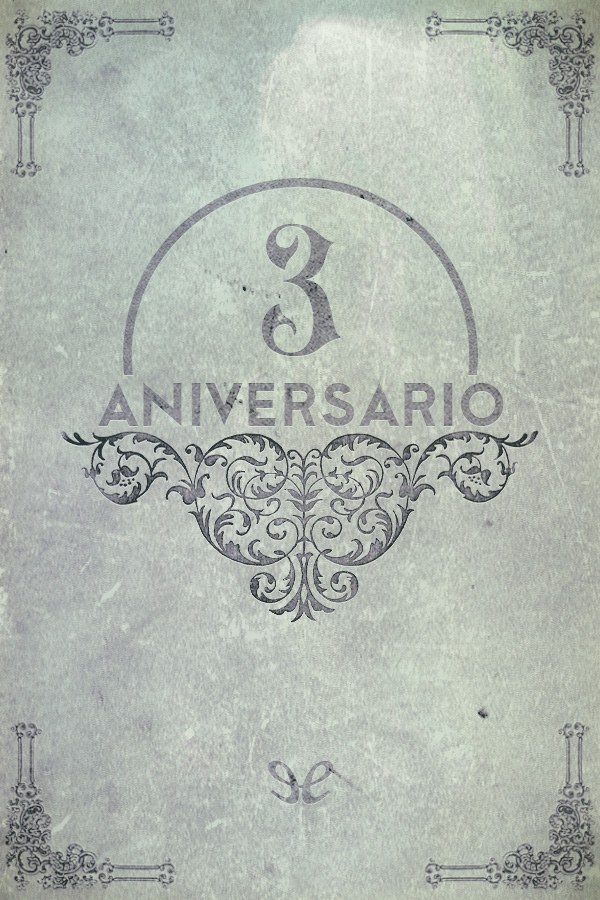Over the last two decades, writer-director Guillermo del Toro has mapped out a territory in the popular imagination that is uniquely his own, astonishing audiences with Cronos, Hellboy, Pan's Labyrinth, and a host of other films and creative endeavors. Now, for the first time, del Toro reveals the inspirations behind his signature artistic motifs, sharing the contents of his personal notebooks, collections, and other obsessions. The result is a startling, intimate glimpse into the life and mind of one of the world's most creative visionaries. Complete with running commentary, interview text, and annotations that contextualize the ample visual material, this deluxe compendium is every bit as inspired as del Toro is himself.
Contains a foreword by James Cameron, an afterword by Tom Cruise, and contributions from other luminaries, including Neil Gaiman and John Landis, among others.

Guillermo del Toro
Cabinet of Curiosities
My Notebooks, Collections, and Other Obsessions
ePub r1.0
SoporAeternus 26.04.16

A sketch of a basket star by del Toro, after a photograph in National Geographic. Del Toro often turns to National Geographic for inspiration and never takes photos, preferring to record memorable images by sketching them.

A painting at Bleak House depicting a skull full of compartments that contain assorted objects.


Concept of the pit where Ofelia encounters the Faun in Pans Labyrinth by Ral Monge and Ral Villares. Sketches from del Toros fourth notebook.

Sketch of the Faun from Pans Labyrinth in del Toros fourth notebook (Page 12B).

Del Toro and his partner in animation, Rigoberto Mora, with his Canon 1014XL-S Super 8 camera shooting clay animation.

A bust of Mr. Barlow the vampire by Daran Holt.
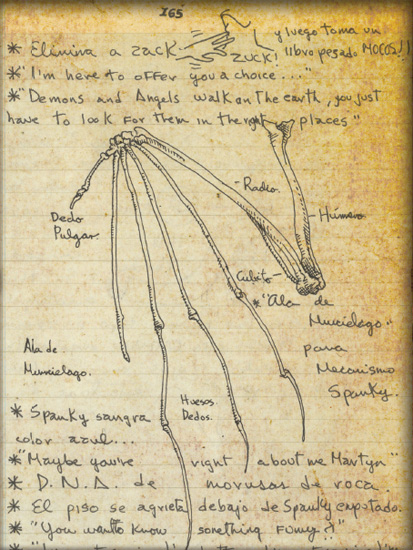
A study in wing anatomy from del Toros Blue Notebook.
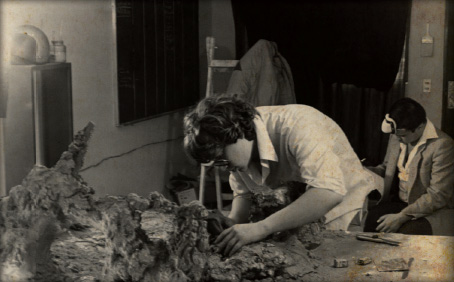
Del Toro and Mora preparing an animation set.
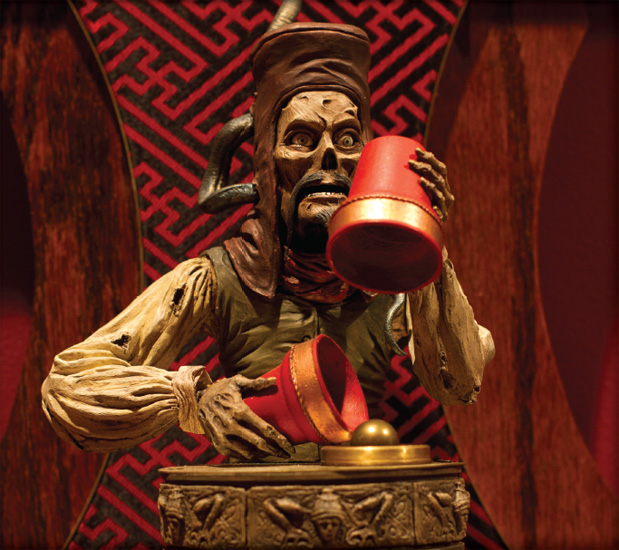
An automaton by Thomas Kuntz, part of the collection at Bleak House.

Notebook 4, Page 20B.

A gathering of childhood toys and trinkets at Bleak House.
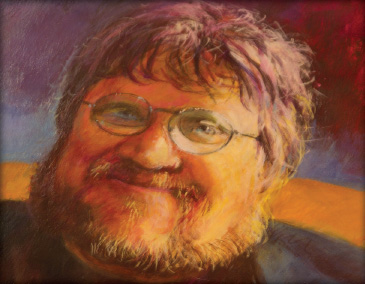
A portrait of del Toro by Basil Gogos.
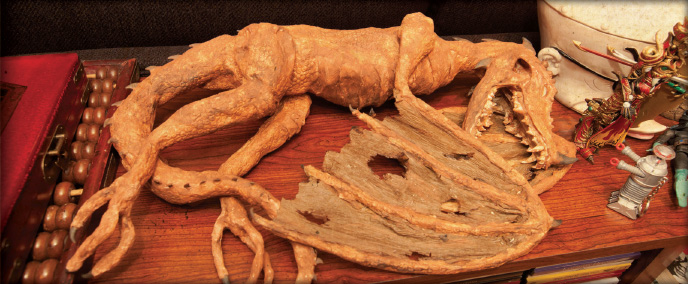
A dead dragon gaff at Bleak House.
INTRODUCTION
GUILLERMO DEL TORO
THE WORLD AS CABINET
You have to believe the magic to see it. GUILLERMO DEL TORO
F OR GUILLERMO DEL TORO, IT ALL STARTS WITH THE EYEor, more accurately, the lens. His keen vision processes everything, judging it, molding it to his intellectual and creative purpose, turning it to his interests and obsessions, exquisite and grotesque, and crafting it into an endless procession of indelible, unique imagessome on the world stage, some utterly private.
Most private of all are his phenomenal notebooks, full of pointed observations, random thoughts, sketches from life, and wondrous drawings. At first glance, they appear to resemble those of another polymath, Leonardo da Vinci. A true modern Renaissance man with stunning capacity, vast interests, and endless enthusiasm, Guillermo del Toro invites such a comparison. Like Leonardo, Guillermo is an artist with wide interests and talents who can be hired but not bought and who approaches the way he lives with a passionate aesthetic sense.
One of the biggest lessons Leonardo leaves for all creators is that man is the work of art, notes Guillermo. Obviously, the Mona Lisa is a masterpiece. The Vitruvian Man, The Last Supperboth masterpieces. We can all agree on that. But Leonardothe man, the anatomist, the designer, the architect, the scientistis the real masterpiece. He is his ultimate creation. So live well. Be curious and hungry and always in awe of the world.
Leonardo is far from the only titan who inspires Guillermo del Toro in his quest to create himself. As with da Vinci, Mark Twain is the work of art. Its not the isolated novels, or stories, or aphorisms. Its the man. In the same way, in the tragic sense, that is true of Oscar Wilde or Truman Capoteboth of whom, I believe, had a tragic imbalance between their artistic output and their lives as socialites.
From each of his many guides, Guillermo selects bits and pieces, playing the role of Dr. Frankenstein and the monster both, becoming the scientist who fashions himself into something simultaneously shocking and beautiful. He combines the darkness of Lovecraft, the formalism of Hitchcock, the wildness of Fellini. His distinct palette is equal parts Richard Corben, Johannes Vermeer, Edvard Munch, and his beloved symbolistsFlicien Rops, Odilon Redon, Carlos Schwabe, and Arnold Bcklin.
Guillermo is an omnivore, or more accurately, a creature who absorbs everything that draws his interest and transmutes it into something all his own. Through his sorcery we see the world transformed. His bleak and heartening vision imprints us as indelibly as a tattoo, its grimness leavened by compassion, its central charactersoften children in emotional isolationstruggling to master a larger world.

